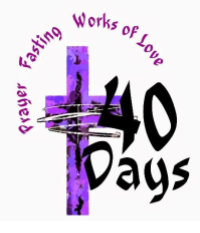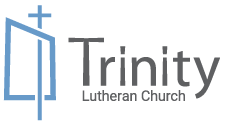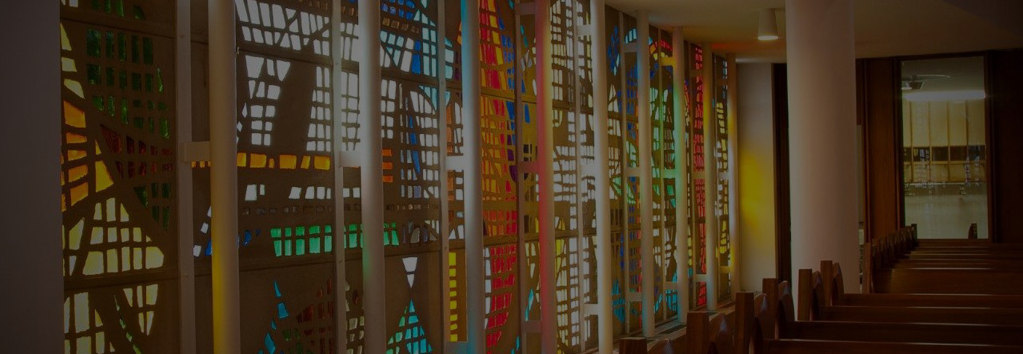O Lord, throughout these forty days
you prayed and kept the fast;
inspire repentance for our sin,
and free us from our past.
You strove with Satan, and you won;
your faithfulness endured;
lend us your nerve, your skill, and trust
in God’s eternal word.
Though parched and hungry, yet you prayed
and fixed your mind above;
so teach us to deny ourselves
that we may know God’s love.
Be with us through this season, Lord,
and all our earthly days,
that when the final Easter dawns,
we join in heaven’s praise. 1
Evangelical Lutheran Worship, Hymn # 319
Beloved community,
A Trinity member sent a note yesterday with a query based on a simple mathematical calculation. He rightly noted that we speak of the 40 days of Lent, yet it appears that there are 45 or 46 days between Ash Wednesday and our celebration of Easter. I had the opportunity to share with that meticulous and faithful parishioner that the 40-day season of Lent does not include Sundays, which are considered ‘little Easters,’ bursts of resurrection joy that transcend the penitent nature of our season of 40 days of Lent. If you remove the Sundays from the calculation, the days from Ash Wednesday through Holy Saturday number 40.
 A bit more on that span of 40 days: in the ancient scriptural imagination, “40” was both a stylized way of saying, “for a long time,” and a way of resonating with other key “40’s” in Israel’s sacred memory: the flood’s 40 days and nights of rain (Genesis 7:12), Moses’ 40 days and nights on Mount Sinai (Exodus 34:28), Israel’s 40 years of wilderness wandering (Deuteronomy 8:2), and not least, Jesus’ 40 days of wilderness temptation. The underlying idea here is that God, like a master poet, choreographer, or composer, works through signature forms in time and space — and in the Season of Lent, we’re invited to participate in one of those forms by stepping into our own 40-day pilgrimage of reflection, repentance, prayer, and preparation.
A bit more on that span of 40 days: in the ancient scriptural imagination, “40” was both a stylized way of saying, “for a long time,” and a way of resonating with other key “40’s” in Israel’s sacred memory: the flood’s 40 days and nights of rain (Genesis 7:12), Moses’ 40 days and nights on Mount Sinai (Exodus 34:28), Israel’s 40 years of wilderness wandering (Deuteronomy 8:2), and not least, Jesus’ 40 days of wilderness temptation. The underlying idea here is that God, like a master poet, choreographer, or composer, works through signature forms in time and space — and in the Season of Lent, we’re invited to participate in one of those forms by stepping into our own 40-day pilgrimage of reflection, repentance, prayer, and preparation.
As I recalled that 40-day formula, I also remembered being asked early in my ordained ministry from where the word “Lent” was derived. That questioning member of my first parish rightly noted that you don’t find the word “Lent” in the Bible. I confessed that I was not sure of that derivation, and that I would get at the pursuit of that bit of liturgical trivia.
I learned that the word “Lent” comes from “lencten,” an Old English word for “lengthen,” and refers to the gradually lengthening days of late winter and early spring. Over the centuries, Lent evolved into a 40-day period of reflection, repentance, and preparing not only for Holy Week but also for the subsequent 50-day celebration of the season of Easter.
I confess that I have since treasured the idea that Lent evokes spring, the lengthening of days, and the return of life’s growing things for we who live in northern regions. As we seek to reflect, repent, pray and prepare during this season of preparation for Easter, the days are getting ‘longer.’ Yesterday as I drove to Grand Rapids for the live streaming of worship on the First Sunday in Lent, I was accompanied by the sunlight of early morning for the entirety of my drive. It was welcome accompaniment.
Last year it was the Third Sunday in Lent, March 15, when we began to refrain from worship as the COVID-19 pandemic fully arrived. I remember sitting in our worship spaces during the times when we would have normally been gathered for worship, to simply be present if someone did not get the message of our closure and arrived for worship. No one did. My little vigil that day was transformed into a prayerful occupancy of those spaces we love. All were lit only by the indirect natural light coming in from western walls of windows, in the Courtyard and on the balcony back wall of the sanctuary. Despite the solitude, a gentle warm light enveloped those spaces, and I found myself at worship.
It was Lent, and the chancel wall banner provided the theme for my first pandemic vigil and for the vigil of this last year in our life together as a community of faith. “Be still, and know that I am God,” spoke the Psalmist. Be still, and know the light of a new day, a new possibility, a new dawn. Psalm 46:10 has become a quiet affirmation as the weeks transformed into months, and as the seasons have continued to unfold. It is again late winter in our life together, and the Lenten banner has been lifted again onto the chancel wall. We are invited again into the quiet stillness of sanctuary. We are invited into the knowledge of a God who remains faithful no matter what challenges we face. And we are invited into the promise of springtime new life.
It will be the Third Sunday in Lent, almost a year to the day since we began our closure, when we again enter the sanctuary and Centennial Hall as a congregation on March 7. We tried to come back for a couple of Sundays last fall before the surge in the virus brought our region and our nation into renewed retreat. Now we will begin again to gather in these sacred spaces, made sacred by our offering of worship. As I write to you today, public health officials are marking 500,000 deaths from the coronavirus and we know that we are not out of the woods yet. But spring is coming. Easter is coming. So, let us with humility approach the empty tomb and the promise that our faithful God defeats death still.
For now, we still have most of our 40-day Lenten journey ahead. The Lord be with you as you sojourn.
Blessings to you, O people of Trinity. May you be safe, may you be well, and may you be held in love.
It remains a privilege to serve as one of your pastors.
Grace and peace,
Pastor Robert Linstrom


